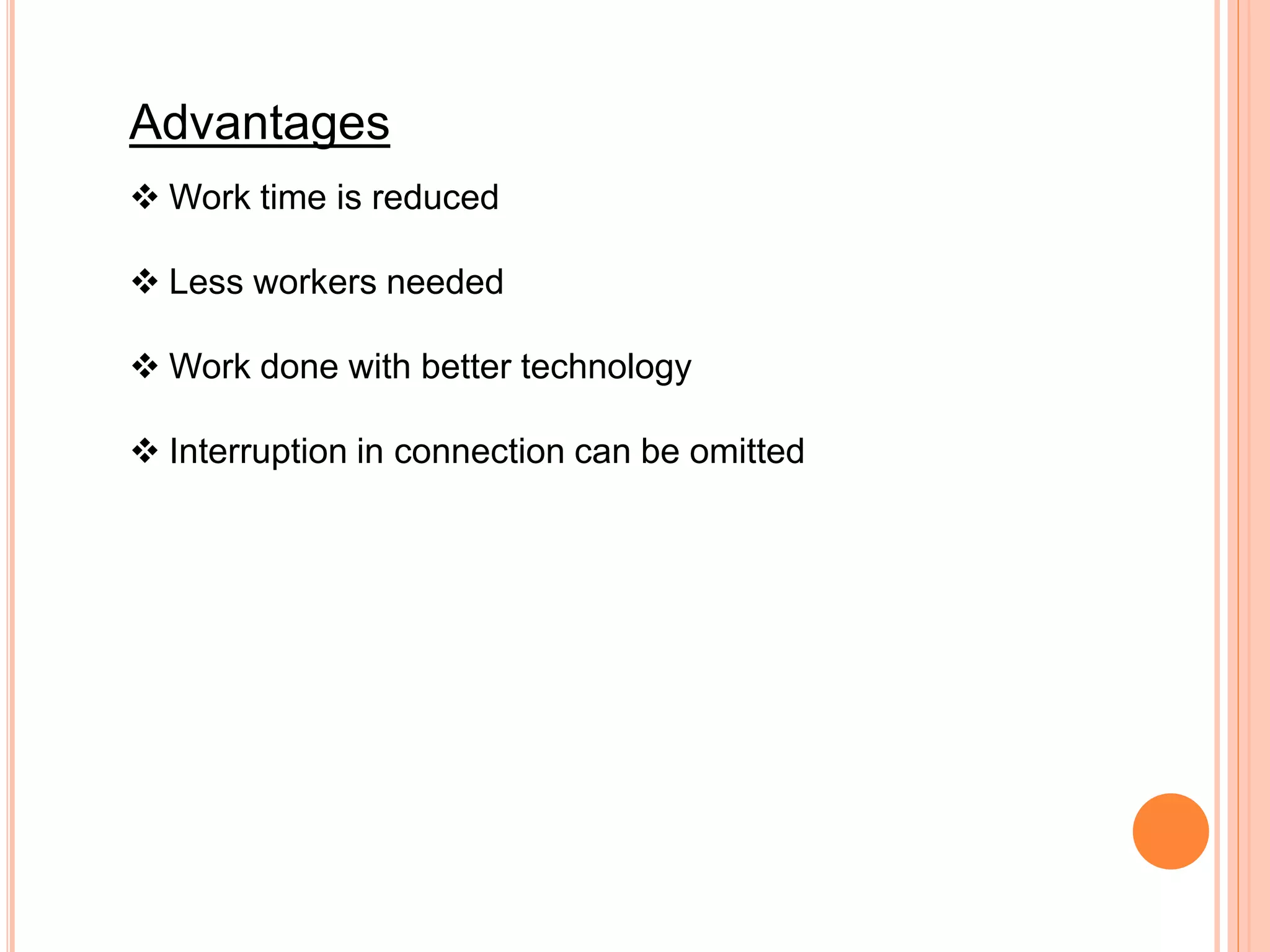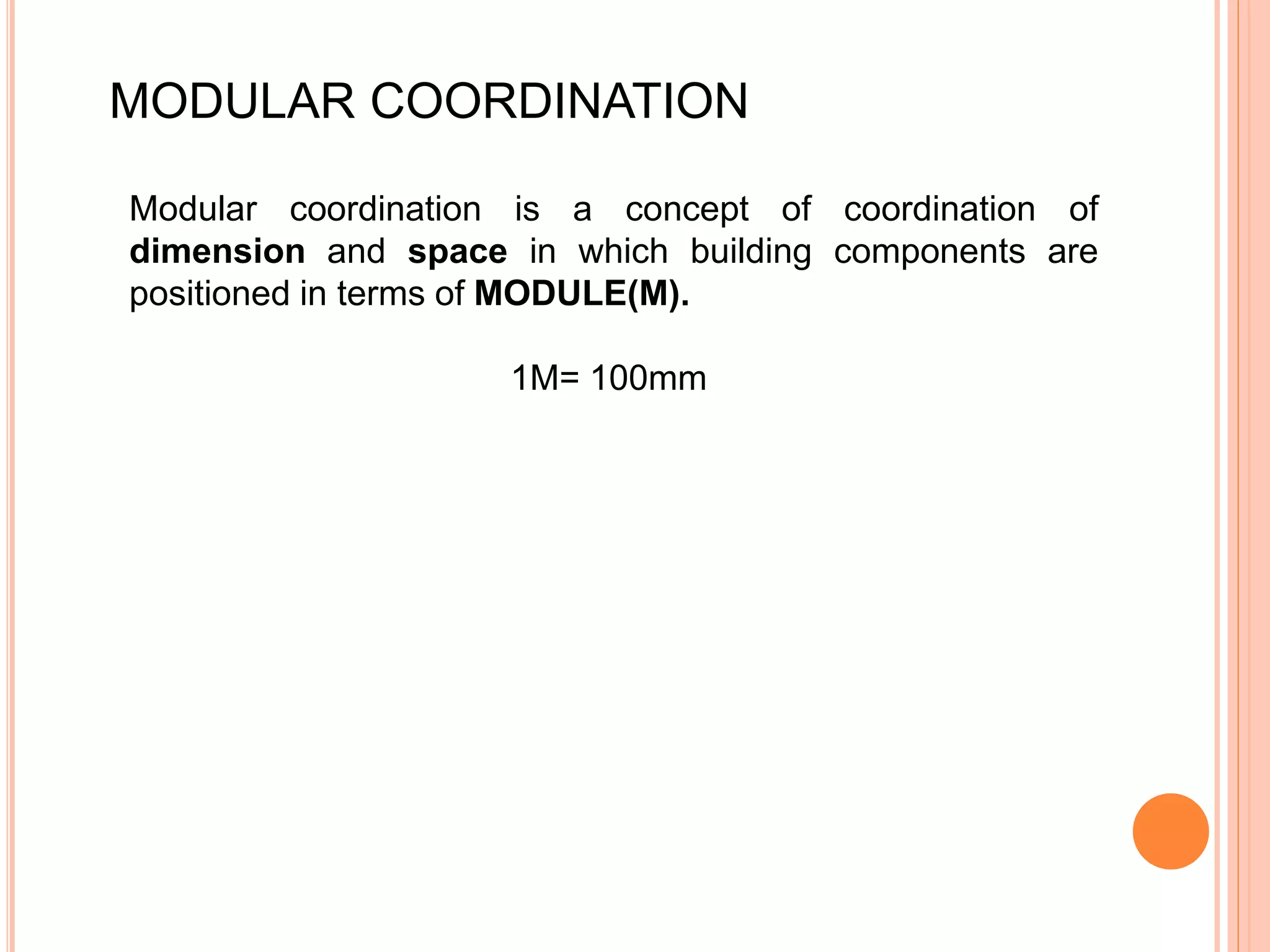Prefabrication involves assembling building components in a factory and transporting them to the construction site. It aims to reduce costs, improve quality, and speed up construction. Advantages include reduced work time, fewer workers needed, and omitting interruptions. Limitations include size restrictions and transport difficulties. Modular coordination standardizes dimensions. Precast construction allows for industrial quality control while limiting on-site space needs and waste.


















